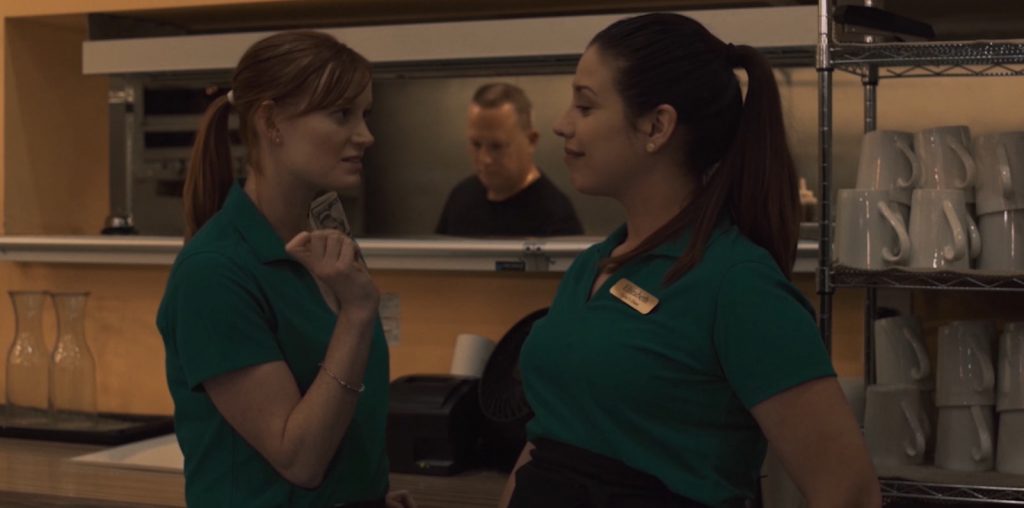
Roscoe “Fatty” Arbuckle is unique among film stars in being remembered for what he didn’t do, rather than for what he accomplished. Scandal-chasers are all too familiar with the tragic false accusations that Arbuckle killed a starlet named Virginia Rappe in a drunken orgy at a 1921 San Francisco party, and while Arbuckle was eventually acquitted he was subsequently blacklisted by the Hollywood studio system for most of the 1920s. By the time he was able to find a break and tip-toe into a comeback during the early 1930s, he died suddenly.
Less-well-known is Arbuckle’s talents as a comedian and director during the silent film era. This can be traced to the widescale destruction of the prints of Arbuckle’s films following the accusations surrounding Virginia Rappe’s death. Since Arbuckle fell so quickly from grace, it was assumed his films had no further commercial potential and no reason to exist. Thus, destroying his work effectively erased him from the big screen and popular memory.
Mercifully, a great deal of his work managed to survive, primarily in European archives. Most notable among the surviving films are a series of two-reel shorts which Arbuckle made from 1917 to 1920 which co-starred a vaudeville acrobat new to motion pictures: Buster Keaton.
Kino on Video recently compiled ten films from this collaboration into a two-video set entitled “Arbuckle and Keaton”…with many of the titles being seen again for the first time in nearly 80 years.
Arbuckle first came to fame in the early and mid-1910s as a player in Mack Sennett’s Keystone Studios. With his considerable girth, Arbuckle clearly stood out among the ensemble players…but instead of being stuck in one-dimensional fat-boy routines, Arbuckle displayed a remarkable sense of physical agility and natural charisma which made him an audience favorite. During the peak of his popularity, Arbuckle was only second to Chaplin for box office strength.
Arbuckle left Sennett in 1916 to direct his own films for a rival production comedy called Comique. In creating his own films, Arbuckle began to slowly shift the focus and style of film comedy away from the feral insanity of the Sennett school, where bricks went flying into foreheads and cars drove into living rooms without pause for consequence or logic. Arbuckle’s style comes down through the years as a curious hybrid, thick with zany slapstick but also showing signs of subtle character humor which laid the groundwork for the comedies of the 1920s and beyond. Self-referential humor (whether winking at the camera or freely acknowledging his presence in a movie) were part of Arbuckle’s stock-in-trade.
“These films were made in the midst of the slapstick revolution, as it was evolving from blunt, knockabout comedy into something more sophisticated,” explains Bret Wood, Producer of Special Projects for Kino on Video. “Chaplin had shown that silent comedy could have depth and emotion, and this inspired Arbuckle, Keaton & Co. to explore new areas as well. Some experiments succeed, others fail, but one senses that the films were being made in an
environment of reckless creativity… and that makes them fascinating to watch, even if they don’t generate their full quota of laughs.”
The Arbuckle films presented in the Kino series offer a brisk, surreal and, admittedly, sometimes incoherent approach to comedy. Plotlines shift abruptly to support a truckload of gags and routines which, although screamingly funny, nonetheless bear no resemblance to the purpose and point of the film’s initial direction and goal.
With his oversized derby and too-tight clothing wrapped around his 265-pound body, Arbuckle is the too-visible central focus, and his coyly mischievous fondness for rude pranks and challenging authority provides an endless stream of confrontations. Whether he is the drunk trying in vain to escape from a detox hospital in “Good Night Nurse!” or the suitcase-carrying hotel orderly in “The Bell Boy” or the T-Man seeking out hillbillies with an entrepreneurial flair for home-made brew in “Moonshine,” Arbuckle inevitably charges into status quo-disrupting situations like the proverbial bull entering the china shop.
Keaton is generally Arbuckle’s best friend in the films, and Keaton’s fans will be pleasantly surprised to see how he experimenting with establishing a comic identity in these films. The celebrated deadpan expression which earned Keaton the moniker “The Great Stoneface” is conspicuously absent from many of the films, as the funnyman often mugs for the camera (“Coney Island” has him bawling like a baby when he learns that his girlfriend ran off with another guy) and he even occasionally betrays a smile at the nuttiness swirling around him. By the final film of their collaboration, the 1920 “The Garage,” Keaton’s stoic character (complete with his trademark flat hat) are clearly established and never varied through the remainder of his long career.
Get the whole story and read FATTY ARBUCKLE WOBBLES AGAIN! (part 2) >>>
